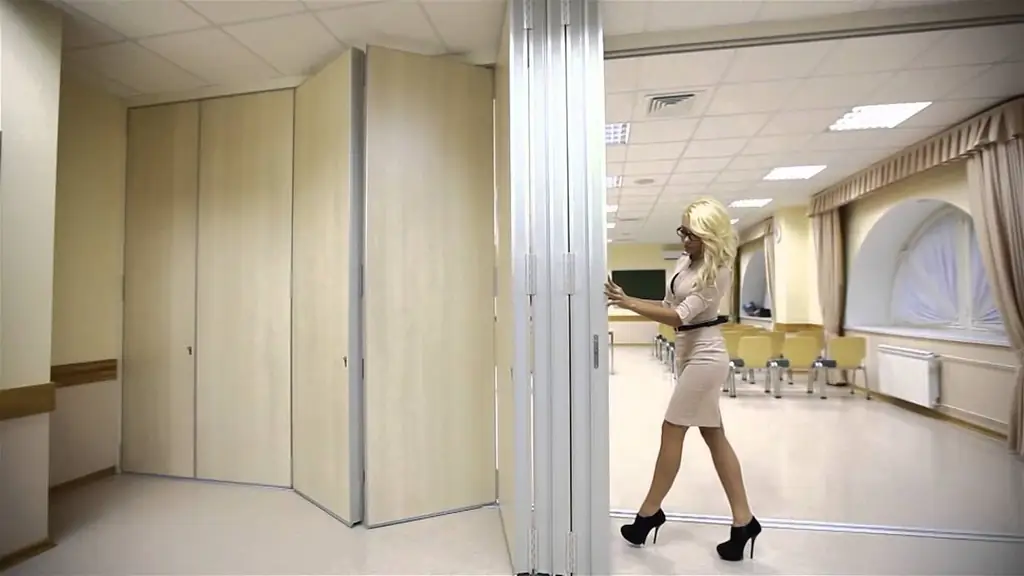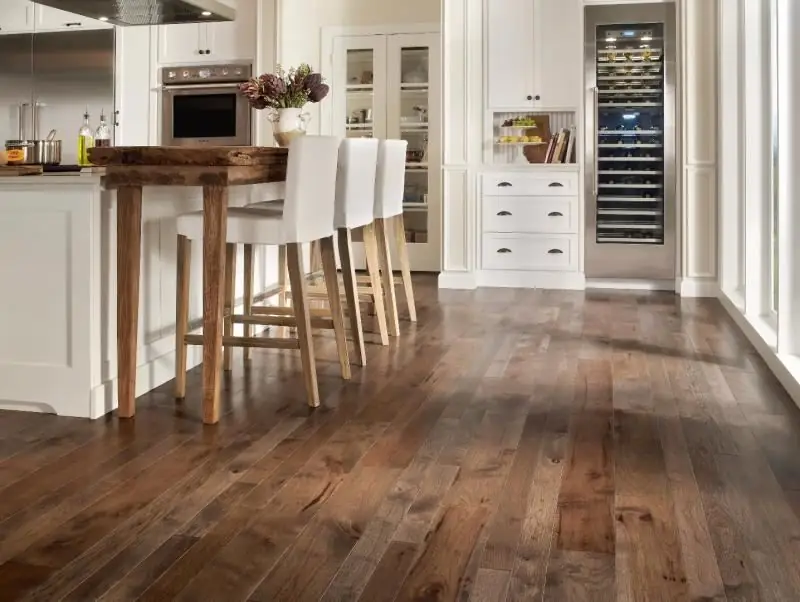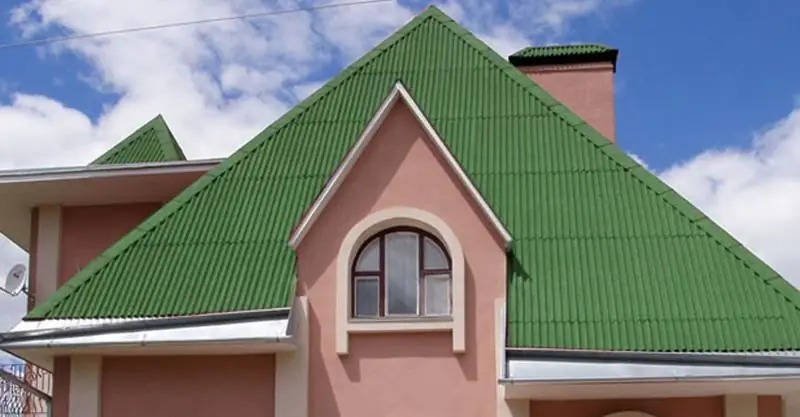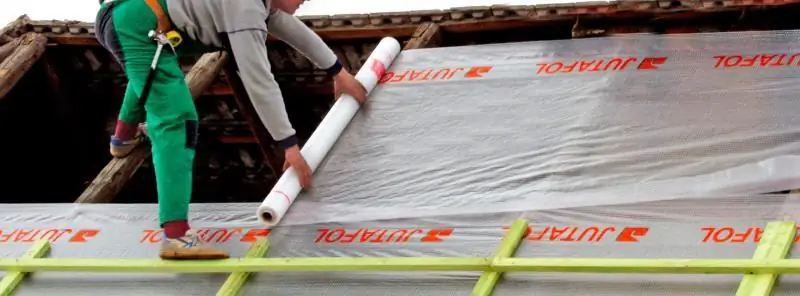
Table of contents:
- Author Bailey Albertson [email protected].
- Public 2024-01-17 22:26.
- Last modified 2025-06-01 07:32.
Metal tile: advantages and disadvantages, installation and maintenance features

Metal roofing is a popular sheet roofing material. Imitating classic ceramic tiles, it is characterized by high strength, long service life, ease of installation, spectacular appearance, and affordable price. Reliable and beautiful roofs made of metal tiles confidently displace obsolete roofing coverings from the construction market.
Content
- 1 Production of metal tiles
-
2 Advantages and disadvantages
- 2.1 Sizes of sheets of metal and additional elements
- 2.2 Service life of metal roofing
-
2.3 Cost
2.3.1 Table: the cost of metal tiles (rubles / m2) from different manufacturers
-
3 How to choose
3.1 Photo gallery: houses with metal roofing
-
4 Self-assembly of the roof
- 4.1 Preliminary calculations, preparation and purchase of tools and materials
-
4.2 Step-by-step instructions for roofing
- 4.2.1 Photo gallery: stages of installation of metal roofing
- 4.2.2 Video: installation of a metal roof
- 5 Operation of the roof
- 6 Reviews about metal tiles
Production of metal tiles
The finished material is a profiled sheet made of sheet steel, copper or aluminum with a protective polymer layer. The metal tile is produced and individual tile elements. But due to the complexity of the manufacturing and installation processes, this type of coating is not in great demand.

The metal tile looks like thin profiled sheets with a colored polymer coating
Large enterprises carry out the entire technological process of metal tile production: from hot rolling, galvanizing and anti-corrosion treatment of sheet steel to stamping, coating with a decorative layer and cutting of finished sheets.

The full production cycle of metal tiles includes the production of sheet metal and stamping of tile sheets
This roofing material is made on automated lines from thin sheet (0.4-0.5 mm) metal using the cold pressure method. Russian manufacturers mainly use hot-dip galvanized cold rolled steel with phosphate anti-corrosion coating. Manufacturing steps:
- A roll of thin metal is unwound and passed through the roll drums of the rolling mill.
- In the ACS (Automatic Control System), product parameters are entered: sheet length and width, wave height and distance between them.
- Longitudinal undulating relief is created with the profiling rollers. The transverse bend is cold stamped.
- A guillotine (hydraulic shears) figuratively cuts the edge of each sheet in accordance with the wave profile.
- Finished products are stacked on pallets where they are packed for transportation or storage.

The longitudinal and transverse relief of the metal tile is stamped by the cold method
Due to the variety of colors and corrugation configurations (the height of the shear waves and the pitch between them), the metal tile roof looks very aesthetically pleasing and original.
Advantages and disadvantages
The main differences between metal tiles from different manufacturers are sheet thickness, type of polymer coating and appearance. The advantages of this roofing material include:
- Ease. Depending on the thickness of the metal, the weight of 1 m 2 of the metal tile is 4-7 kg. For comparison: the same slate fragment weighs 10-15 kg, and ceramic tiles - 38-60 kg.
- Easy to lay. The optimal size of the sheets significantly reduces the installation time of the roofing.
- A wide range of colors. Manufacturers offer 10-12 shades of their products.
- Durability. The manufacturers claim a 10-15 year warranty period for the material. The actual service life, depending on climatic conditions and with high-quality installation, is 30-50 years.
-
Profitability. The low weight of the metal tile reduces costs:
- for transport, handling and installation work;
- on the device of the roofing cake;
- to lay the foundation of the building.
- Fire resistance. Metal tiles are non-combustible, non-flammable and non-spreading materials.
- Environmental friendliness. Materials in the composition of metal tiles do not emit toxic substances into the surrounding space.
This roof covering is recommended for regions with mild environmental impact and temperature parameters from -50 to +50 ° C
The disadvantages of the material conventionally include large losses when constructing a roof of a complex configuration. With the low cost of metal tiles and their undeniable advantages, a high percentage of waste is justified. Some residents of houses with metal roofing roofs report unpleasant loud noise during strong winds, hail or rain. However, with the correct construction of the roofing cake, the sounds of precipitation are absorbed by its layers.

From a distance, metal tiles are difficult to distinguish from their natural counterparts
Sizes of sheets of metal and additional elements
The modern building materials market offers metal tiles from different manufacturers, sometimes significantly different in size. When calculating roofing materials, all the overall characteristics of this coating are taken into account:
- The actual width and length of the sheet. The length can be from 40 cm to 8 m. The width of the sheet is determined by the size of the base material - cold-rolled galvanized steel. Since in all countries similar technologies for the production of rolled metal and similar equipment are used, the width of the metal tile sheet varies in a small range: from 111 cm to 119 cm.
-
Useful (working) length and width of sheets. To eliminate leaks and increase the level of roof strength, the metal tile is laid by overlapping the upper element onto the lower one. In this case, the transverse dimension decreases by 6-8 cm, and the longitudinal dimension decreases by the wavelength.

Full and working width of a metal tile The working width of a sheet of metal is less than its full width by the total amount of overlaps on both sides
- Profile height. Depending on the type of corrugation, it varies from 1.8 cm to 8 cm.
- Distance (step) between waves. To imitate the pattern of ceramic tiles, the pitch is 35-40 cm.
- The thickness of the canvas. In the conditions of central Russia, it is optimal to use metal tiles made of rolled steel with a thickness of 0.45-0.50 mm. In general, roofing sheets are produced from material with a thickness of 0.35 mm to 0.70 mm.
On an individual order, it is possible to manufacture sheets of metal tiles of any length with a change in the height of the profile and the step between the waves
When installing a roof made of metal tiles, additional elements are used that have actual and working dimensions. These components include various strips:
- ridge semicircular or angular shape and a plug to it;
- cornice;
- wind;
- end;
- upper and lower valleys;
- inner and outer corners;
- snow holder;
- junction of the upper and lower.

Each additional element of the metal tile has an actual and working size
For example, if the ridge strip consists of several parts, then they are stacked end-to-end with an overlap of at least 20 cm. In accordance with this, the total and working length of this element is calculated.
Service life of metal roofing
How long the roof will last is not the last question when building a house. The main effect of precipitation, solar ultraviolet radiation, and the negative chemical influence of the environment is assumed by the roof itself.
The operational life of a metal tile depends on several factors:
- Correspondence of the metal thickness to the required parameters: thin sheets are easily deformed, thick ones - with high-quality installation, they do not justify the costs.
-
Protective coating quality:
-
anticorrosive layer (zinc, from alloys of zinc with aluminum or iron, aluminum and silicon) on both sides of the canvas with a thickness of 225-275 g / m 2. New anti-corrosion compounds improve the properties of the material and require the use of thinner metal sheets. The aluminum-zinc coating is 3-5 times more durable than hot-dip galvanized, extending the service life of the roofing coating for tens of years, but increasing its cost;

The structure of the metal tile The thickness of the anti-corrosion and decorative polymer coatings affect the service life of the metal tile
-
protective and decorative layer - the type and thickness of the polymer coating (made of acrylate, polyester, plastisol, polyvinylidene fluoride or polyurethane) determine the area of use of the metal tile:
- within the city, a polyester layer 25-30 µm thick is sufficient;
- near industrial enterprises that emit waste products into the atmosphere, a protective coating up to 200 microns is used.
-
A durable, self-healing plastisol protective layer is recommended for use in cold climates. Manufacturers declare the service life of metal tiles with this coating to be 50-70 years.
Complex combinations of protective polymer compounds make it possible to use metal-tipped roofs in conditions of aggressive environmental influences: salty air, proximity to chemical production, etc. The operational life of the roofing is extended provided that the sheets are carefully transported, special tools are used when installing the roof and the roofing cake is properly laid …
The cost
The modern building materials market offers a wide range of metal tiles from manufacturers from Russia and other countries. The price of 1 m 2 of such a coating depends on the thickness of the rolled metal and protective coatings.

When calculating the total cost of roofs, the number of sheets of metal tiles and additional elements is taken into account
Table: Cost of metal (RUR / m 2) from different manufacturers
|
Material thickness and coating |
"Metal Profile" | "Interprofile" | "MetalloProf" |
| 0.40mm Polyester | 253 | 299 | 245 |
| 0.45mm Polyester | 292 | 313 | 285 |
| 0.50 mm Pural | 423 | - | 577 |
| 0.50 mm Plastisol | 490 | 565 | 404 |
How to choose
Before purchasing metal tiles, it is recommended that you familiarize yourself with the offers of different manufacturers, as well as their reputation. When choosing this roof covering, you need to pay attention to:
- thickness of rolled metal;
- composition and thickness of the anti-corrosion layer;
- decorative coating parameters;
- beauty of the profile.
A neatly and precisely stamped profile ensures a tight fit of the metal tile waves, increasing the reliability and increasing the life of the roof.
When purchasing, it is recommended that you familiarize yourself with the manufacturer's warranty obligations: according to Russian law, the warranty period for metal tiles should not exceed 15 years.
Dark colors fade faster. Material from different manufacturers differs in shades.
Photo gallery: houses with metal roofing
-

House with a metal roof - On roofs with a large number of slopes, special attention should be paid to the joints and abutments
-

Metal roofing gray-green - A variety of colors and profiles of metal tiles allow you to choose the material for the overall design of the site
-

Complex metal roofing - When installing metal tiles on complex roof structures, a lot of waste is generated
-

Metal roofing in red and burgundy tones - The skillfully chosen design of the house in red and burgundy colors, sharply shading the white walls, involuntarily attracts attention and arouses a feeling of admiration
Self-assembly of the roof
For ease of installation and to ensure the reliability and strength of the roof, it is recommended to order sheets of metal tiles equal to the length of the slope. This minimizes waste of roofing and the number of fasteners, and reduces the time of work and costs. It is practical and economical to order canvases to be cut along the length of the slope, provided that this size is about 4 meters. Otherwise, transporting and lifting the sheets to the roof will cause inconvenience and increase costs.

When installing a roof made of metal tiles, it is important to observe the sequence of laying the layers of the roofing cake and arrange the necessary ventilation gaps
Correct installation of all layers of the roofing cake determines the strength and durability of the roof
Preliminary calculations, preparation and purchase of tools and materials
The calculation of the required amount of metal tiles is as follows:
- The horizontal length of the slope is measured along the ridge or cornice.
- Knowing the useful area of the selected coverage, the number of vertical rows is calculated.
- The working length of the sheet (actual length minus overlap plus overhang) determines the required amount of roofing.
- The volume of additional elements is calculated in the same way.
To carry out the work, the following tools and materials will be required:
- ladder;
- scissors for metal;
- electric drill;
- long rail;
- measuring device;
- marker;
- a hammer;
- screwdriver;
- mounting tape;
- protective clothing (gloves and glasses);
- hydro and vapor barrier film;
- insulation;
- self-tapping screws and sealing washers;
- ridge aero roller;
- bars 50x50 mm and boards 30x100 mm.
Dry wooden parts are pre-treated with an antiseptic. Consumption of roofing screws: 6-9 pcs. for 1 m 2 of coverage.
Step-by-step instructions for roofing
Installation work is carried out in a certain order:
-
Installation of rafters. The trusses are nailed in increments of no more than 90 cm. The rigidity of the structure is provided by cornice and ridge girders. Roof overhangs are hemmed with clapboard or metal or plastic plates. It is recommended to take the rafters outside the walls by 50-60 cm.

Rafter system Roof trusses are installed at a distance of 60-90 cm from each other and are connected by a ridge run
-
Installation of roofing cake. This stage combines the laying of waterproofing, insulation, vapor barrier material and ventilation:
- the waterproofing material is fixed to the rafters horizontally, starting from the ridge, with an overlap of 100-150 mm with a sagging of 20 mm (for condensate drainage);
- the insulation is laid between the rafters at a distance of 20-25 mm from the waterproofing and vapor barrier;
-
the vapor barrier film is fixed with a stapler inside the rafter system. For tightness of joints, the joints are glued with butyl tape.

Installation of a vapor barrier membrane From the side of the premises, the insulation is protected from streams of warm and humid air with a layer of vapor barrier
-
Installation of battens. On top of the waterproofing film, bars with a section of 50x50 mm are stuffed onto the rafters. Cross boards (approximate size 30x100 mm) are fastened with an interval equal to the intervals between the waves. In valleys, around chimneys and dormers, the crate is made continuous. The gap between the waterproofing and the roofing provides natural ventilation of the roof.

Sheathing for metal tiles Counter-lattice bars, stuffed onto the rafter beams, create a ventilation gap between the waterproofing film and the roofing, due to which condensate will evaporate from the under-roof space in winter
-
Installation of additional elements: valleys, gutters, adjoining and cornice strips, gutter holders, roof windows (if any).

Installing gutter brackets The gutter holders are attached before the roofing is installed
-
Laying metal tiles. It is more convenient to start fastening the roofing sheets from one of the lower corners of the roof. The canvases are laid parallel to the cornice with an overhang of 40 mm behind it. Adjacent 3-4 sheets are fixed in the upper part with one self-tapping screw, leveled and fixed completely. The sheets are aligned relative to the cornice and along the waves of adjacent canvases. Self-tapping screws are screwed in strictly perpendicular to the wooden plank. For cutting metal tiles, metal shears, a jigsaw, a hacksaw with fine teeth or a circular saw with carbide teeth are used. Do not use an abrasive disc.

Installation of metal tiles Sheets of metal tiles are laid from bottom to top, gradually moving from one pediment to another
- Installation of end and ridge strips, antenna and ventilation outlets.
Photo gallery: stages of installation of metal roofing
-

Installation of the rafter system - Roof trusses are installed one at a time, temporarily securing them with stops and struts
-

Roof window - When installing roof windows, abutting strips are used
-

Installation of metal tiles on a gable roof - Sheets of metal tiles are fixed to transverse wooden beams
-

Installation of metal roofing - There is a 50 mm gap between the sheets of metal and waterproofing for natural ventilation
-

Laying waterproofing under a continuous crate - The waterproofing material is laid over the rafters with a slight slack
Video: installation of metal roofing
Roof operation
At the end of the installation, the roof is cleaned of debris and the integrity of the coating is checked. If cracks, scratches and chips are found, they are covered with an anti-corrosion compound. Caring for this unpretentious metal surface consists in cleaning it of small debris, branches and leaves in autumn and snow in winter.
When cracks and scratches appear, they are treated with a rust agent and sealed. Large debris from gutters and valleys is removed by hand. Stains and streaks that cannot be washed off with a soft brush are removed with special compounds for cleaning polymer coatings. Peeling and rust are cleaned with White Spirit and after drying are covered with a special paint.
Reviews of metal tiles
Today, about 70% of buildings under construction are covered with metal roofing. This lightweight, inexpensive and aesthetic coating is suitable for all types of pitched roofs. The high quality of the material and adherence to the installation rules determine the long service life of the metal roofing.
Recommended:
Interior Sliding Partitions For Zoning The Space Of A Room: Design And Material Features, Their Pros And Cons, As Well As Installation Instructions, Photos

The device and purpose of interior sliding partitions. Varieties of partitions by design. Independent production and installation
How To Choose A Laminate For The Kitchen: Types, Pros And Cons, Recommendations, Reviews, Photos Before And After Installation

Advantages and disadvantages of laminate flooring in the kitchen, as well as the rules for choosing and maintaining flooring. Features of kitchen design with laminate
Roofing Elements Made Of Metal Tiles, Including Their Description And Characteristics, As Well As The Ridge For The Roof, Its Structure And Installation

The main elements used in the construction of metal roofing. Their description, characteristics and purpose. Features of mounting the ridge strip
Ondulin As A Roofing Material: Description, Dimensions, Pros And Cons, Reviews And Photos

Ondulin characteristics: cost, service life, dimensions, ease of installation and operation. Advantages and disadvantages of the material. How to choose ondulin for the roof
Roof Membrane, Its Types And Brands With Description, Characteristics And Reviews, As Well As Installation Features

What is a roofing membrane. What types of membranes are used in the construction of various roofs. Membrane brands and features of their installation
